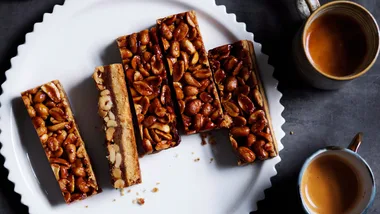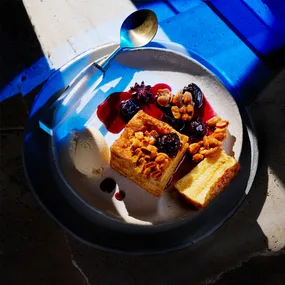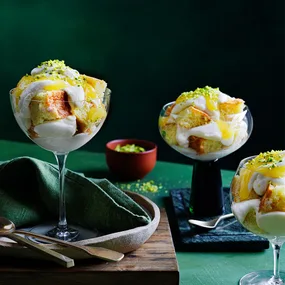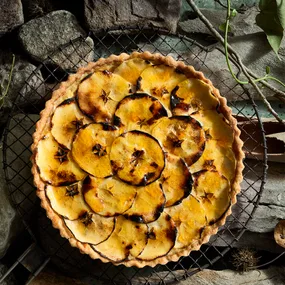“It’s mince, Jim, but not as we know it.” The mince in question here today refers, of course, to the chopped dried fruit that constitutes these classic Christmas pies’ filling (typically an assortment of currants, raisins, peel and apples buoyed with spices and a good lick of brandy or rum). But it wasn’t long ago that it was a different story.
Up until the 19th century, mince pies (they’re called mince tarts if they don’t have lids) were indeed made from minced or shredded meat, typically pork, beef or a mixture along with the fruit, as were Christmas puddings. Gradually the balance tipped in favour of more fruit and less meat (fruit becoming much cheaper over the course of the Victorian period may have been a factor) until almost no flesh of beasts remained. Suet is still used in many recipes (most butchers can render this beef fat for you with a little notice), as it is here – a preserving agent, it doesn’t go rancid like butter, and it moistens the mixture and adds flavour.
Meat or no, traditions abound. The stars sometimes seen topping them are symbolic of the star that led the Magi to Bethlehem. Folklore also has it that eating a pie on each of the 12 days of Christmas brings wealth and prosperity for the future 12 months. Whether they truly assure good fortune or not, these sweet treats are worth the eating.
These spiced-fruit delights come into their own at Christmas.
Ingredients
Method
Main
Note You’ll need to start this recipe at least 1 day ahead. Candied orange slices are available from gourmet food stores. You can substitute candied mix peel from supermarkets.
Notes










